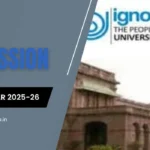Research Techniques for Successful IGNOU Reports
Data collection is the bridge between your research questions and meaningful conclusions. In IGNOU projects, where independent work is emphasized, the rigor and appropriateness of your data gathering methods directly determine the credibility of your findings.
Research Philosophy for Distance Learners
IGNOU accepts three main research paradigms: quantitative (numbers-based), qualitative (interpretation-based), and mixed methods (combination). Your choice must align with your research objectives and program requirements.

Distance learners must consider accessibility constraints. Methods requiring extensive travel or organizational access need careful planning or alternatives.
Primary vs Secondary Data Collection
Most Ignou project synopsis sample projects require a combination. Purely secondary data projects are accepted but must demonstrate critical analysis and value addition beyond summarization.
Advantages and Challenges of Primary Data
Advantages: High relevance to research objectives, control over data quality, opportunity to fill literature gaps, impressive to evaluators.
Where to Find Credible Existing Data
Industry Reports: NASSCOM, FICCI, company websites, CSR reports, sustainability disclosures.
Always verify source credibility, publication date, and methodology used in secondary data collection. Cite properly to avoid plagiarism accusations.
Structured Data Collection Techniques
The process involves: defining variables, writing clear questions, pilot testing, revision, and final distribution.
Crafting Effective Survey Questions
Use simple language (avoid jargon), ensure questions are unambiguous, maintain logical flow from general to specific, include demographic questions at the end.
Sampling Techniques for Surveys
Sample size: Minimum 30 for statistical tests, 100+ preferred for MBA/MCA. Use online calculators or Yamane's formula for precision.
Digital Platforms for Data Collection
Recommended tools: Google Forms (free, integrates with Sheets), Microsoft Forms, SurveyMonkey, Qualtrics (institutional access).
Interview Method: Structured to Unstructured
Semi-structured interviews are most common in IGNOU projects, balancing depth with manageability.
Probing Techniques
Pilot test with 2-3 respondents to refine questions and timing (30-60 minutes ideal).
Finding Key Informants
Use purposive or expert sampling: HR managers for recruitment studies, teachers for education projects, startup founders for entrepreneurship topics.
Observation and Case Study Methods
Both methods require detailed protocols, ethical considerations, and triangulation with other data sources.
Choosing Organizations for Analysis
Maintain field notes with date, time, context, observations, and researcher reflections.
Ethical Considerations in Data Collection
IGNOU requires ethical research conduct. Include ethics statement in methodology covering: informed consent, voluntary participation, anonymity/confidentiality, data security, no harm to participants.
Maintaining Research Honesty
Use Turnitin/Urkund for plagiarism checking before submission. Keep raw data files, survey responses, and interview recordings as proof.
Pilot Testing and Tool Validation
Conduct pilot study with 10% of intended sample size or 5-10 respondents. Test for: question clarity, response patterns, timing, technical issues (online forms).
Data Cleaning and Preparation
Steps: Check for missing responses, identify outliers, code open-ended responses, create master chart in Excel/SPSS.
Time Management in Data Collection
Build buffer time for low response rates or access delays. Start early - waiting until synopsis approval risks deadline pressure.

Strategies for Incomplete Information
Use statistical methods for missing data: listwise deletion, mean substitution, multiple imputation (advanced).
Documentation and Research Diary
Include methodology chapter appendices: blank questionnaire, interview guide, observation checklist, pilot study summary.
Technology-Enabled Methods
Big data analysis using public datasets, social media sentiment analysis, mobile app-based surveys, AI-powered interview transcription (Otter.ai), virtual reality observations.
Pitfalls to Avoid
Inadequate Sample Representation: Document sampling process transparently.
Poor Timing: Plan around academic calendars.
Quality Information for Quality Projects
Data collection is not a mechanical process but the soul of your research. The quality, quantity, and authenticity of your data determine the strength of your conclusions and the value of your project contribution.
Your data collection chapter should read like a research story - logical, detailed, and transparent. When examiners can visualize your research process, they are more likely to accept your findings.
Word count: approximately 1500 words
